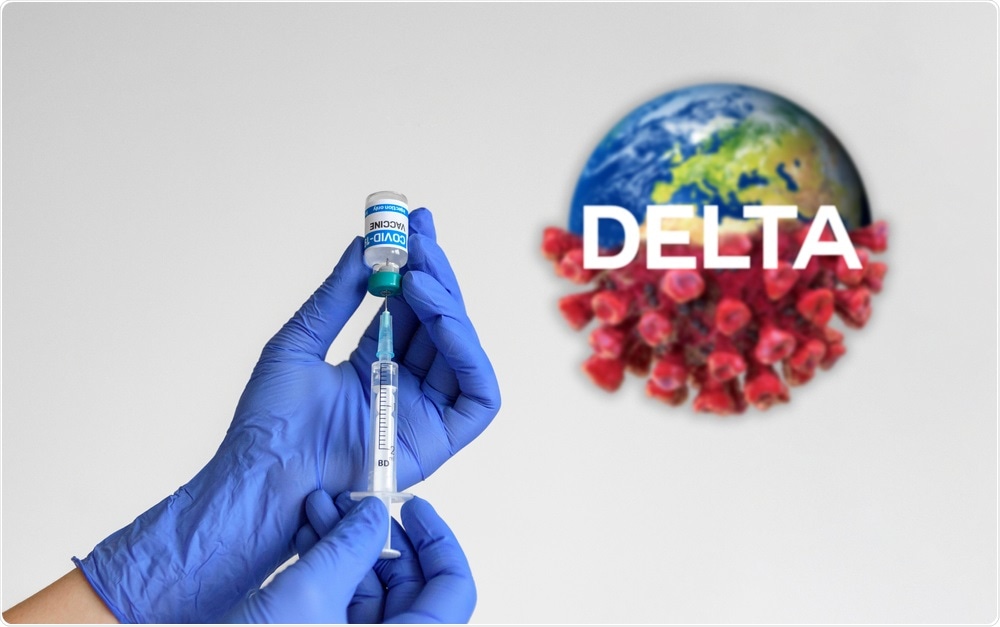bactrim dosage pediatric uti

The severe acute respiratory syndrome coronavirus 2 (SARS-CoV-2) has infected more than 262 million people and caused over 5.2 million deaths since its emergence in December 2019. Despite the high effectiveness of currently available vaccines, breakthrough SARS-CoV-2 infections have been reported in fully vaccinated individuals in real-world studies.
The highly infectious SARS-CoV-2 variants of concern (VOC) have been found to be the primary reason for breakthrough infections post-immunization. Although most SARS-CoV-2 variants have emerged through mutations outside the spike protein, few of them have mutations in the receptor-binding domain (RBD) of the spike protein, which leads to high infectivity or immune escape.
 Study: Investigating SARS-CoV-2 breakthrough infections per variant and vaccine type. Image Credit: WirestockCreators / Shutterstock.com
Study: Investigating SARS-CoV-2 breakthrough infections per variant and vaccine type. Image Credit: WirestockCreators / Shutterstock.com
About the study
In a preprint study published on the medRxiv* server, researchers compared the distribution of SARS-CoV-2 genotypes identified in 378 fully vaccinated individuals to the prevalence of variants that were identified by regional surveillance of SARS-CoV-2 in the South Limburg region of the Netherlands from January to July 2021.
The current study defined cases as patients who were fully vaccinated against SARS-CoV-2, as defined as being more than 14 days post two doses of Pfizer-BioNTech, Moderna, or Oxford-AstraZeneca vaccine or over 14 days following one dose of Johnson & Johnson vaccine, or those who had coronavirus disease 2019 (COVID-19)-related symptom onset and subsequently tested positive for COVID-19 by real-time polymerase chain reaction (RT-PCR) or antigen test.
Patients with COVID-19-related symptoms such as cold, discount cipro loss of taste or smell, diarrhea, nausea, fatigue, and headache were considered symptomatic. Cases reporting no COVID-19-related symptoms at the time of their positive test and developed no symptoms during the seven-day follow-up period were categorized as asymptomatic.
Hospitalized cases and cases with fatal outcomes were classified as severe, whereas the remaining cases were considered to be mild-moderate. The current study employed trained personnel to collect combined nasopharyngeal/oropharyngeal swabs in a viral transport medium. Viral sequencing and mapping data were statistically analyzed.
Study findings
The findings of the current study showed that before the occurrence of the Delta variant, breakthrough cases emerged at a continuously low frequency, and the rate of SARS-CoV-2 variants causing breakthrough infections matched well with the distribution of those variants in the region.
However, when the Delta variant became dominant in the region, the proportion of breakthrough cases versus total cases appeared to increase. It was difficult to determine whether the increase in the relative proportion of breakthrough infections is related to the rise of the Delta variant, as a large number of fully vaccinated individuals also increased during that period.
The authors also noticed that the messenger ribonucleic acid (mRNA)-based vaccines (0.14%) led to fewer breakthrough infections as compared to the Johnson & Johnson/Janssen (0.46%) or Oxford-AstraZeneca vaccines (0.89%) relative to the number of administered vaccines. A noteworthy difference in median age was also observed when comparing fully vaccinated individuals with severe symptoms to asymptomatic cases or individuals with mild-to-moderate symptoms.
No association was established between SARS-CoV-2 genotype or type of vaccine and disease symptoms. Moreover, higher viral loads were identified in symptomatic individuals as compared to asymptomatic vaccinated individuals.
The Delta variant-led breakthrough infections were linked to increased viral loads as compared to those caused by the Alpha variant. These findings suggest that the efficiency of certain types of vaccines decreased because of the emergence of the Delta variant and that the elderly are more vulnerable to severe disease through SARS-CoV-2 breakthrough infections.
Limitations and conclusions
There are some limitations to this study. Since asymptomatic or mild cases from local hospitals were not reported to the regional public health service, the number of reported breakthrough infections is underestimated. Also, asymptomatic cases were followed up for only a short period of time, which likely led to the underestimation of symptomatic cases
In conclusion, this study found that SARS-CoV-2 breakthrough infections were observed to a greater extent in individuals who received the Oxford-AstraZeneca or Johnson & Johnson/Janssen vaccines as compared to those who received mRNA-based vaccines. As the Delta variant became dominant, there was a rapid increase in breakthrough infections, although severe disease was seen observed in the elderly.
Since the Delta variant appears to reduce vaccine effectiveness and increase viral loads in both vaccinated and unvaccinated individuals, a booster shot for certain vaccines and at-risk populations might help prevent future COVID-19 outbreaks.
“It was found that breakthrough infections were more frequently observed in people who received Oxford-AstraZeneca or J&J/Janssen in comparison with recipients of the mRNA-based vaccines.”
*Important notice
medRxiv publishes preliminary scientific reports that are not peer-reviewed and, therefore, should not be regarded as conclusive, guide clinical practice/health-related behavior, or treated as established information.
- Dingemans, J., van der Veer, B. M. J. W., Gorgels, K. M. F., et al. (2021). Investigating SARS-CoV-2 breakthrough infections per variant and vaccine type. medRxiv. doi:10.1101/2021.11.22.21266676. https://www.medrxiv.org/content/10.1101/2021.11.22.21266676v1
Posted in: Medical Research News | Disease/Infection News | Pharmaceutical News
Tags: Antigen, Cold, Coronavirus, Coronavirus Disease COVID-19, Diarrhea, Fatigue, Frequency, Headache, Immunization, Nasopharyngeal, Nausea, Polymerase, Polymerase Chain Reaction, Protein, Public Health, Receptor, Respiratory, Ribonucleic Acid, SARS, SARS-CoV-2, Severe Acute Respiratory, Severe Acute Respiratory Syndrome, Spike Protein, Syndrome, Vaccine

Written by
Susha Cheriyedath
Susha has a Bachelor of Science (B.Sc.) degree in Chemistry and Master of Science (M.Sc) degree in Biochemistry from the University of Calicut, India. She always had a keen interest in medical and health science. As part of her masters degree, she specialized in Biochemistry, with an emphasis on Microbiology, Physiology, Biotechnology, and Nutrition. In her spare time, she loves to cook up a storm in the kitchen with her super-messy baking experiments.
Source: Read Full Article